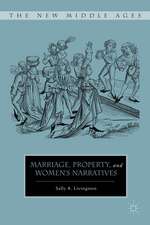Marlowe and Shakespeare: The Critical Rivalry
Autor Robert Sawyeren Limba Engleză Hardback – 24 aug 2017
The study not only looks at literary critics and their assessments, but also at playwrights such as Aphra Behn, novelists such as Anthony Burgess, and late twentieth-century movie and theatre directors. The work concludes by showing how the most recent outbreak of Marlowe as Shakespeare’s ghostwriter accelerates due to a climate of conspiracy, including “belief echoes,” which presently permeate our cultural and critical discourse.
| Toate formatele și edițiile | Preț | Express |
|---|---|---|
| Paperback (1) | 585.90 lei 43-57 zile | |
| Palgrave Macmillan US – 12 mai 2018 | 585.90 lei 43-57 zile | |
| Hardback (1) | 733.78 lei 43-57 zile | |
| Palgrave Macmillan US – 24 aug 2017 | 733.78 lei 43-57 zile |
Preț: 733.78 lei
Preț vechi: 894.85 lei
-18% Nou
Puncte Express: 1101
Preț estimativ în valută:
140.45€ • 152.61$ • 118.06£
140.45€ • 152.61$ • 118.06£
Carte tipărită la comandă
Livrare economică 21 aprilie-05 mai
Preluare comenzi: 021 569.72.76
Specificații
ISBN-13: 9781349952267
ISBN-10: 1349952265
Pagini: 382
Ilustrații: XI, 382 p. 4 illus.
Dimensiuni: 148 x 210 mm
Greutate: 0.62 kg
Ediția:1st ed. 2017
Editura: Palgrave Macmillan US
Colecția Palgrave Macmillan
Locul publicării:New York, United States
ISBN-10: 1349952265
Pagini: 382
Ilustrații: XI, 382 p. 4 illus.
Dimensiuni: 148 x 210 mm
Greutate: 0.62 kg
Ediția:1st ed. 2017
Editura: Palgrave Macmillan US
Colecția Palgrave Macmillan
Locul publicării:New York, United States
Cuprins
Chapter 1 Introduction: "The Rivals of My Watch".- Chapter 2: "Locating the Earliest 'Critics'".- Chapter 3: The Seventeenth Century: "Collaboration, Co-Authorship and the Death of the Author(s)".- Chapter 4: The Long Eighteenth Century: "Limbs Torn Asunder, Borrowing the Bones, Identifying the Corpus".- Chapter 5: The Nineteenth Century: "The Space(s) of the Critical Rivalry in London".- Chapter 6: The Twentieth Century: "Formalization, Polarization, and Fictionalization".- Chapter 7: The Twenty-First Century: "Trauma, Drama, and Conspiracy".-
Recenzii
“Robert Sawyer’s Marlowe and Shakespeare: The Critical Rivalry takes the complex meaning of the term ‘rival’ in the early modern period as something between ‘competitor’ and ‘partner’ or even ‘collaborator’ to survey the way the two playwrights have been viewed in relation to one another … . The book will be very valuable to graduate students, in particular, who wish to learn the critical history of their field and to any scholar interested in the cultural history of literary criticism.” (Henry S. Turner, SEL Studies in English Literature 1500-1900, Vol. 58 (02), 2018)
Notă biografică
Robert Sawyer is Professor of Literature and Language at East Tennessee State University. Author of Victorian Appropriations of Shakespeare, he is also co-editor of Shakespeare and Appropriation, and Harold Bloom’s Shakespeare. A section of Chapter 7 was awarded a Calvin Hoffman Prize in 2013.
Textul de pe ultima copertă
Instead of asserting any alleged rivalry between Marlowe and Shakespeare, Sawyer examines the literary reception of the two when the writers are placed in tandem during critical discourse or artistic production. Focusing on specific examples from the last 400 years, the study begins with Robert Green’s comments in 1592 and ends with the post-9/11 and 7/7 era.
The study not only looks at literary critics and their assessments, but also at playwrights such as Aphra Behn, novelists such as Anthony Burgess, and late twentieth-century movie and theatre directors. The work concludes by showing how the most recent outbreak of Marlowe as Shakespeare’s ghostwriter accelerates due to a climate of conspiracy, including “belief echoes,” which presently permeate our cultural and critical discourse.
Caracteristici
Focuses on the critical reception of Marlowe and Shakespeare over several centuries Adds to the understanding of one of the most widely discussed rivalries in literary history Examines the critical and cultural discourse of literary critics, playwrights, novelists, and directors Includes supplementary material: sn.pub/extras Includes supplementary material: sn.pub/extras







![The [European] Other in Medieval Arabic Literature and Culture: Ninth-Twelfth Century AD](https://i0.books-express.ro/bt/9780230109407/the-european-other-in-medieval-arabic-literature-and-culture.jpg)








